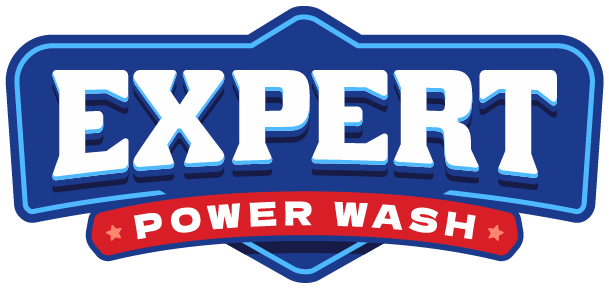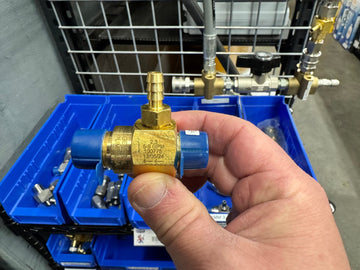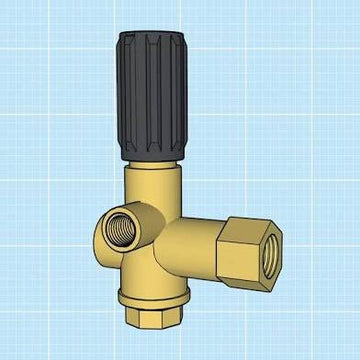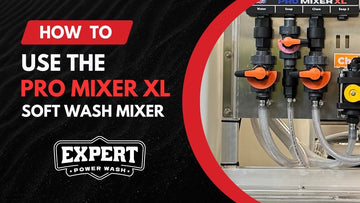Mastering Downstreaming with a Pressure Washer: A Guide by Expert Power Wash
At Expert Power Wash, we understand that achieving the highest level of cleanliness often requires more than just water pressure. While some cleaning tasks can be performed without chemicals, most jobs benefit from the application of specialized cleaning solutions to enhance results. This article aims to provide a comprehensive overview of downstreaming techniques using a pressure washer, equipping you with the knowledge to optimize your cleaning processes.
The Importance of Chemical Injection
When cleaning surfaces, the application of chemicals via a pressure washer can dramatically improve efficiency and effectiveness. While direct spraying methods exist, they often lack the flow and speed needed for quick application. In contrast, integrating a downstream chemical injector into your pressure washing system allows for a seamless combination of water and cleaning agents at significantly higher flow rates—typically between 4 to 6 gallons per minute, compared to 0.5 to 2 GPM with traditional sprayers.
Fixed vs. Adjustable Injectors
When considering a chemical injector, you’ll encounter two main types: fixed and adjustable.
- Fixed Injectors: These models are simpler and often more affordable, as they lack an adjustment knob that can become loose over time due to vibrations. However, they provide a consistent chemical draw.
- Adjustable Injectors: These allow you to manage the amount of detergent being drawn, which can save on chemical costs. However, using less detergent may compromise the quality of cleaning if not monitored closely. They also allow for operation without detergent by simply shutting the adjustment completely.
Understanding Injector Functionality
Downstream injectors utilize the venturi principle, where water flowing through a constricted space increases in velocity and decreases in pressure. As water flows through the injector, a vacuum is created, drawing chemical into the water stream. This action occurs primarily when low pressure is applied at the nozzle. A check valve prevents water from entering the chemical line during high-pressure operation, ensuring that your cleaning agents are used effectively.
The Role of the Check Valve
A crucial component of any downstream injector is the check valve, which prevents backflow into the chemical supply. This typically consists of a spring and ball mechanism housed within the injector. When the system operates under high pressure, the ball seals against an o-ring, preventing contamination of the chemical line. When pressure is relieved, the ball moves away from the seal, allowing chemicals to flow into the water stream.
Optimizing Chemical Application
Nozzle Sizing and Draw Rates
The nozzle you choose to use plays a significant role in how effectively chemicals are drawn into the water stream. The size and type of nozzle will determine the backpressure on the injector, which affects chemical flow. For optimal performance, consider using larger nozzle sizes (30, 40, or 50) to lower pressure and facilitate chemical draw.
Importance of Chemical Filters
To maintain optimal performance, always install a chemical filter at the injection point. This prevents debris from clogging the injector and ensures smooth operation. Choose filters made from materials resistant to the chemicals being used. If using aggressive chemicals, such as strong acids, consider filters constructed from specialized materials to avoid degradation.
Practical Tips for Successful Downstreaming
1. Chemical Line Length: Shorter chemical lines enhance draw rates. Aim to minimize the distance the chemical must travel, especially when drawing from a vertical source.
2. Chemical Viscosity: Be aware that thicker chemicals may require thinning for effective injection. Ideally, chemicals should have a viscosity similar to water for optimal performance.
3. Field Adjustments: In practical applications, always check your chemical container, lines, and filters for blockages if you experience issues with draw rates. Ensure the adjustment knob is set correctly and minimize hose lengths to reduce backpressure.
Installation and Maintenance
For best results, install the chemical injector at the outlet of the pressure washer, just before the high-pressure hose. This setup allows for easy replacement and minimizes downtime during operation. Quick disconnects can also facilitate rapid changes.
Diagnosing Issues in the Field
If you encounter problems with chemical draw, systematically check each component: the chemical container, lines, injector settings, and any attached nozzles. Often, a simple blockage or misconfiguration can hinder performance.
Considerations for Repair vs. Replacement
While some may choose to repair chemical injectors, the cost-effectiveness of replacement should be considered. If a new injector is reasonably priced, it may be more efficient to replace it rather than attempt extensive repairs.
Conclusion
Understanding downstreaming with a pressure washer is essential for maximizing the effectiveness of your cleaning operations. By harnessing the power of chemical injection, you can achieve superior cleaning results while saving time and resources. At Expert Power Wash, we are committed to providing you with the best equipment and knowledge to ensure your pressure washing is efficient and effective. Equip yourself with the right tools, follow best practices, and watch your cleaning performance soar!




